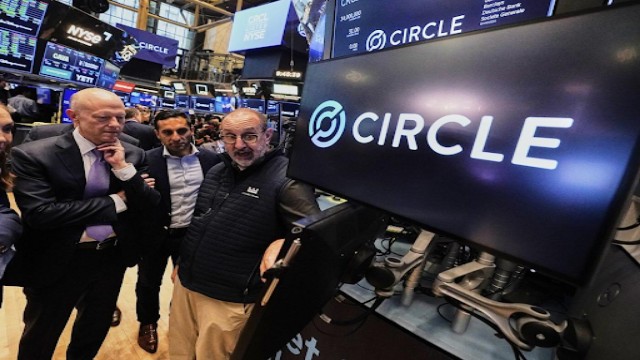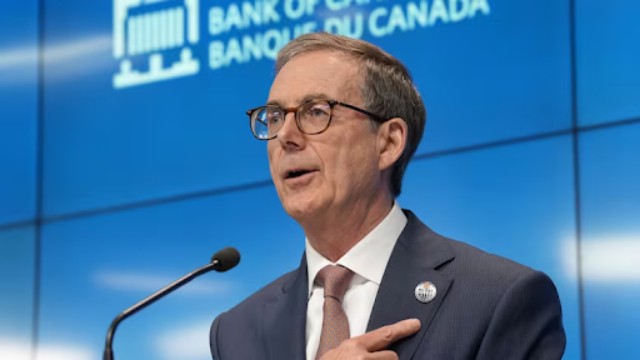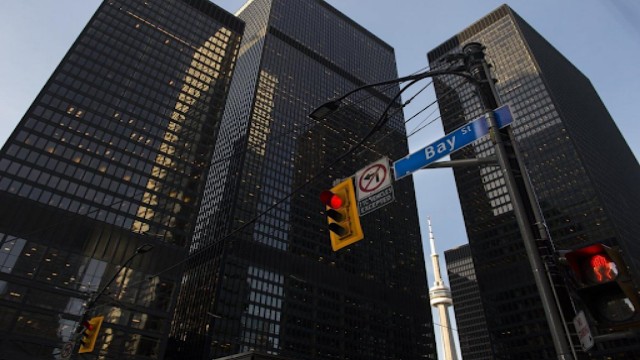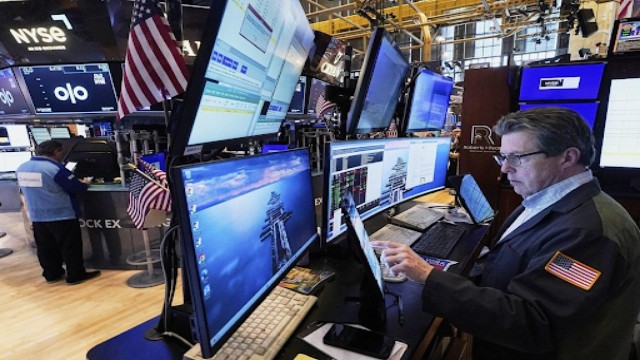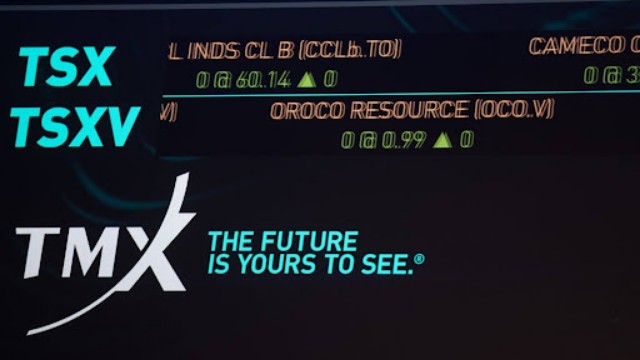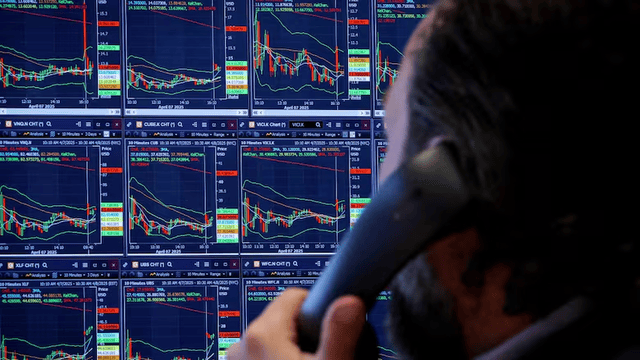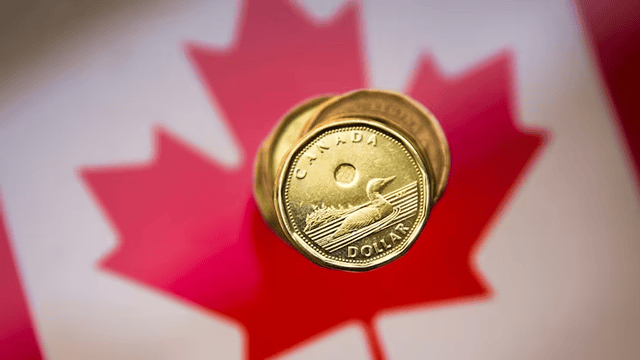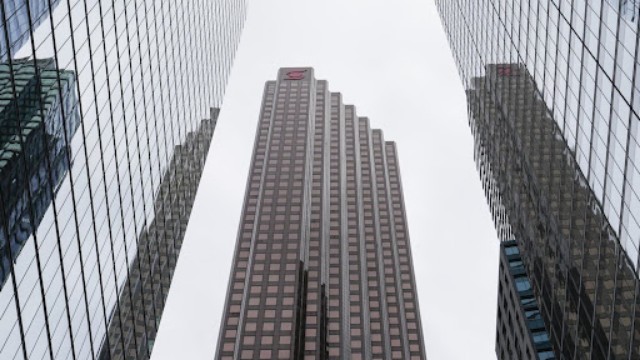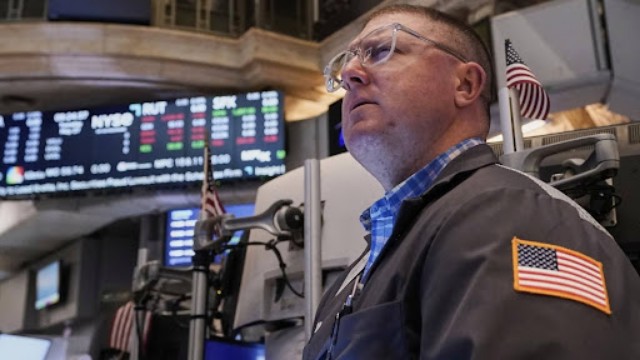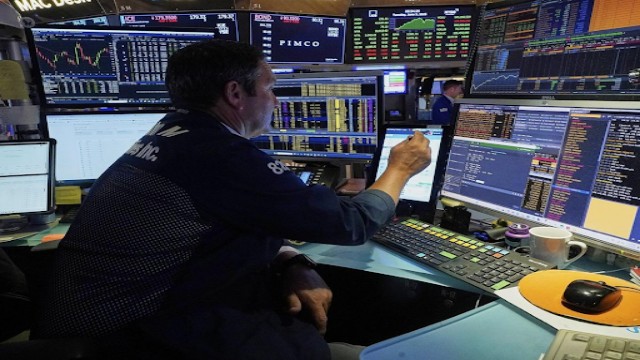
Leon Montana, a trader, is seen working at the New York Stock Exchange on Tuesday, June 3, 2025. (Photo by Richard Drew, AP)
Wall Street paused on Wednesday after several red flags in the U.S. economy dimmed the glow of its recent market rally. Investors saw little action in stock trading, but noticeable movements in the bond market revealed growing concern over the country’s economic health.
The S&P 500 ended the day almost unchanged, hovering close to its all-time high. The Dow Jones Industrial Average dipped slightly by 0.2%, while the Nasdaq composite added 0.3%. In contrast, bond yields plunged, pointing to rising investor expectations that the Federal Reserve may soon cut interest rates.
This shift in sentiment followed two key economic reports that disappointed analysts. First, a report on the U.S. services sector — including retail, finance, and other non-manufacturing industries — showed contraction instead of expected growth. Many businesses surveyed blamed tariff uncertainty for their struggles to plan ahead.
The second report came from ADP, a private payroll company, revealing that only 37,000 jobs were added in the private sector last month — a sharp drop from the previous month’s 60,000 and well below expectations. With the Labour Department's broader job report due Friday, investors are now bracing for more signs of weakness.
While ADP’s numbers don’t always align perfectly with the government’s official data, the soft job growth spooked the market. Carl Weinberg, chief economist at High Frequency Economics, said traders are likely to interpret it as a “dark result”, whether or not it proves accurate.
These developments pushed traders to believe the Federal Reserve might have to cut interest rates later this year to keep the economy afloat. Treasury yields responded immediately — the 10-year yield fell to 4.37% from 4.46%, while the 2-year yield dropped to 3.88% from 3.96%.
Reacting to the ADP data, former President Donald Trump lashed out at Fed Chair Jerome Powell, urging faster rate cuts on his Truth Social platform: “‘Too Late’ Powell must now LOWER THE RATE... Europe has lowered NINE TIMES!”
The Fed has been holding off on further rate cuts this year, watching to see how tariffs and inflation play out. While lower rates could help stimulate growth, they might also fuel inflation, a delicate balance the Fed must weigh.
Meanwhile, concerns around the federal debt are also influencing bond yields. Talks of new tax cuts in Washington have sparked fear that the national debt could balloon, prompting investors to demand higher interest payments from the government.
Back on Wall Street, there were some notable corporate updates:
- Hewlett-Packard Enterprise climbed 1.5% after beating profit expectations.
- Wells Fargo rose 0.8% as the Federal Reserve lifted a 2018 restriction on the bank.
- CrowdStrike, despite reporting strong earnings, fell 5.1% due to missed revenue forecasts and fallout from a past tech outage that impacted Delta Air Lines.
Globally, stock markets in Europe and Asia rose, partly buoyed by hopes for progress in trade talks. The EU’s trade chief met with U.S. officials during an economic summit, but no clear breakthrough emerged. Trump’s comments on Chinese President Xi Jinping also added to uncertainty, calling him “VERY TOUGH, AND EXTREMELY HARD TO MAKE A DEAL WITH.”
As markets digest mixed signals from both economic data and political commentary, all eyes are now on the upcoming U.S. jobs report and whether it confirms growing fears — or helps ease them.


